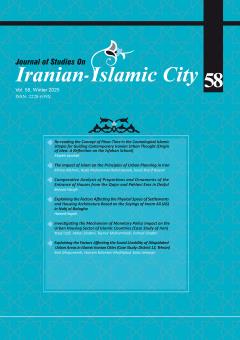-
-
-
Open Access Article
1 - The pattern effect of central courtyard geometric on the air flow in traditional houses of Shushtar
ali mardani امین رؤسائی -
Open Access Article
2 - An Analysis of the Formal Typology of Sunken Courtyards in the Central Plateau of Iran; Case Study: Traditional Houses of Yazd
somayeh omidvari mehdi basouli -
Open Access Article
3 - Statistics of Vital components from overviewing the Traditional Courtyard Houses of Yazd
Seyed Mohammad kazemi Hossein Mahdavipour Shahrbabak Seyed Ali Akbar Koosheshgaran -
Open Access Article
4 - Comparative Analysis of the Role of Culture and Environment in the Formation of Bastakian Houses in Dubai and Houses in Southern Cities of Iran
hossein soltanzadeh rasa moradi ghazaleh mirhadi -
Open Access Article
5 - The application of the concept of peace in the contemporary houses of Kerman )Understanding the different aspects of the formation of peace in two apartment and independent models with a yard(
Motahareh Eslami Mahmoodabadi Yaghoob Peyvastehgar Aliakbar Heidari -
Open Access Article
6 - Examining the Role of the Yard in improving the functional efficiency of Iranian schools (Case study: Meravi, Alborz, Kamal, and Salman Schools)
FARZANEH NARIMANI malihe taghipoor Aliakbar Heidary
List of Articles حیاط
-
The rights to this website are owned by the Raimag Press Management System.
Copyright © 2017-2025


